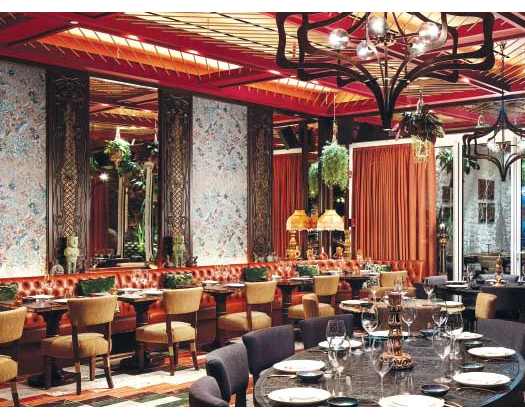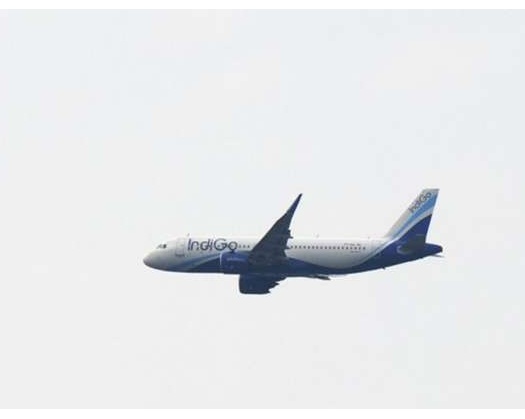Muscat: Virginia Woolf once said, “One cannot think well, love well, and sleep well if one has not dined well.” Her profound insight resonates with me, encapsulating the essence of every culinary journey.
As an enthusiast of discovering new tastes, the allure of authentic Peruvian cuisine has always intrigued me.
Rather than undertaking an 18-hour trek to Peru, COYA Muscat, located within The St. Regis Al Mouj Muscat Resort, provides an equally enriching experience—a genuine taste of Incan heritage right here in Oman. Upon entering COYA Muscat, I sensed that something extraordinary awaited me.
Welcomed with a warm “Welcome to Paradise” by the gracious staff, I was instantly immersed in a world where gastronomy intertwines with artistry and culture. The ambiance was a sensory delight, featuring vibrant Latin American-inspired decor, custom hand-carved furniture, and thoughtfully selected Peruvian artifacts.
The restaurant’s semi-outdoor seating allowed me to enjoy the refreshing Muscat breeze while embarking on my culinary exploration.
A celebration of culture and cuisine, COYA Muscat transcends the typical dining experience. Guided by general manager Mohammed Simo Bennani and the culinary expertise of executive chef Dhharram Rana, the restaurant artfully combines elements of art, music, and gastronomy.
Renowned for his creative use of tropical ingredients and immersive dining experiences worldwide, Bennani has transformed a portion of the ground floor at The St. Regis Al Mouj Muscat Resort into a lively space that embodies Latin American culture—an experience crafted to take diners on a distinctive culinary adventure.
From the art to the music, COYA Muscat enveloped us in a multi-sensory experience from the moment we entered. Every aspect pays homage to Peru’s diverse heritage, merging indigenous flavors with influences from Japanese, Chinese, and Spanish cuisines.
Our welcome drink introduced us to a rich tapestry of historical and mythological narratives through its intriguing names.
I commenced my culinary exploration with a trio of signature non-alcoholic beverages: The Eyes of Inti, Inca’s Rage, and Purple Rain.
Each sip was infused with zesty, exotic flavors that lingered on my palate like a cherished memory.
While I had some familiarity with Peru’s illustrious Incan history, my understanding of its culinary landscape was limited. This changed dramatically upon experiencing COYA’s six-course menu, which vividly brought Peruvian traditions to life, enhanced by global techniques and Chef Rana’s distinctive style.
The Peruvian menu elegantly showcases the influence of its indigenous roots—especially the Incas—while honoring the culinary traditions introduced by European, Asian, and African immigrants. These varied influences, combined with Peru’s rich array of native ingredients, have forged a cuisine that is both historically rich and internationally acclaimed.
At the core of Peruvian gastronomy are four essential staples that define its unique essence: exotic purple corn, an impressive variety of over 3,000 types of potatoes and tubers, vibrant chilies, and nutrient-dense quinoa. Alongside rice, wheat, and a wide assortment of meats, these ingredients form the foundation of Peru’s culinary identity.
A journey through flavors commenced with Ceviche Clásico, a classic Peruvian dish featuring raw fish marinated in citrus juices. Its tangy, fresh flavors served as the ideal introduction to the meal.
The Atun Chifa Ceviche, featuring yellowfin tuna, soy, sesame seeds, and rice crackers, presented a refreshing take on the traditional dish. Meanwhile, the Pargo a la Trufa, which combines red snapper with truffle, ponzu, and chives, along with the Lubina Clásica, showcasing sea bass paired with sweet potato, red onion, and choclo, transformed seafood into a culinary masterpiece.
For shellfish enthusiasts, the Camarones, consisting of tiger prawns with miso, shiso chimichurri, quinoa furikake, and ají amarillo, is a must-try, as is the Ceviche Mixto. This dish, a vibrant medley of scallops, octopus, calamari, and Peruvian ground cherry leche de tigre, offers a delightful array of textures and flavors that will leave you wanting more.
As a meat aficionado, I found the grilled Wagyu Sirloin irresistible. Expertly cooked, it boasted a subtle charcoal flavor that perfectly complemented its exquisite tenderness.
Vegetarians and vegans will appreciate the Alcachofas, featuring baby artichokes with apple, miso, shiso, and pumpkin seeds, as well as the Tomate de Verano, which includes summer tomatoes with compressed watermelon, wakame, sunflower seeds, and ají panca, highlighting the innovative and inclusive nature of COYA’s menu.
Dessert is typically approached with caution, but COYA’s selections were simply too tempting to pass up.
The Mouse de Praline, a delightful combination of praline mousse, passion fruit, white chocolate ice cream, and popping candy, created a harmonious blend of flavors and textures.
Additionally, the Churros de Naranja, crafted from orange and lime churros served with milk chocolate and Dulce de Lychee sauce, provided a perfect sweet conclusion to this remarkable culinary experience.
A tribute to Peruvian cuisine
COYA Muscat offers more than just a meal; it presents a narrative of Peru’s rich multicultural heritage. The influence of the Incas, combined with the culinary contributions from European, Asian, and African immigrants, is evident in every dish, showcasing the unique history and vibrant ingredients that characterize Peruvian cooking.
My three-hour brunch at COYA Muscat was an enlightening experience. Each course enhanced my understanding and appreciation of Peruvian flavors, culture, and traditions. It is a culinary journey I wish to prolong.
As I prepare for my dream visit to Machu Picchu, I am confident that COYA Muscat will continue to be my preferred destination for experiencing the essence of Peru. Upon my return from the land of Inti, I look forward to savoring another delightful experience at this remarkable venue.











